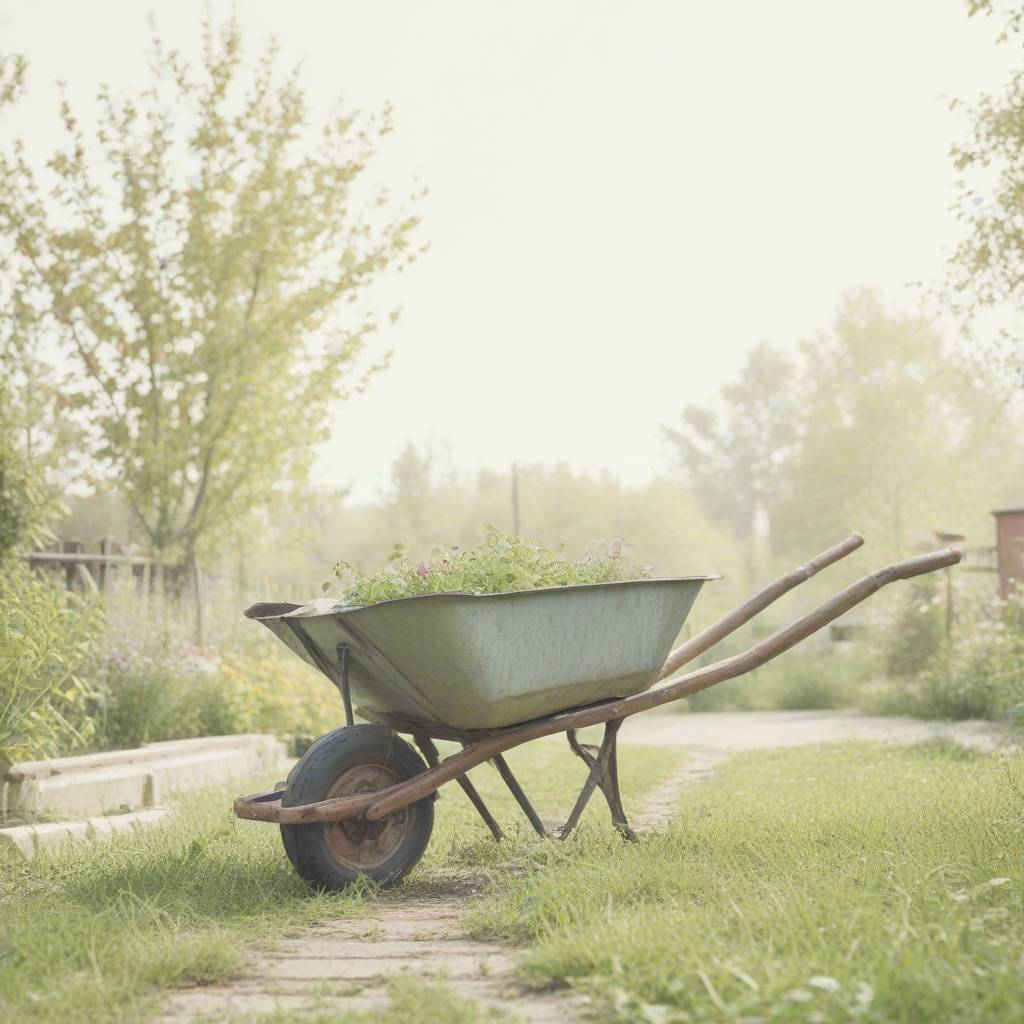
Gardening is more than just a hobby; it’s a form of artistry intertwined with nature’s canvas. To embark on this journey, one must equip themselves with essential Gardening tools akin to an artist’s palette. Among these indispensable tools is the humble but versatile trowel. This handheld wonder serves as a multifunctional aid, facilitating digging, planting, and soil cultivation with ease. Its compact design ensures precision in maneuvering around delicate plants while minimizing disruption to their surroundings. Explore Zardens Planter a perfect mate for every garden.
let’s delve into the essential gardening tools and their uses

Garden Spade
The garden spade, a fundamental tool in gardening, serves various purposes. Its sturdy, flat blade is perfect for digging, edging, and transferring soil. When planting bulbs or small plants, the spade’s sharp edge cleanly cuts through soil, ensuring minimal root disturbance. It’s also useful for creating tidy borders or trenches for irrigation. Furthermore, the spade’s flat surface can be employed for lifting and moving loose materials like mulch or compost.
Hand Trowel
A hand trowel is a gardener’s best friend for transplanting seedlings, digging small holes for planting, or removing weeds. Its compact size and ergonomic handle make it easy to maneuver in tight spaces and around delicate plants. With its pointed blade, the trowel swiftly penetrates soil, allowing for precise planting depth control. Moreover, it aids in loosening compacted soil and scooping out debris from pots or borders.


Garden Fork
The garden fork is indispensable for aerating soil, breaking up clumps, and turning compost. Its sturdy, curved tines penetrate deep into the earth, allowing for efficient loosening of compacted soil without damaging its structure. This tool is particularly beneficial in preparing beds for planting, as it helps incorporate organic matter and nutrients evenly throughout the soil. Additionally, the garden fork is effective in lifting and dividing perennials, ensuring their healthy growth and propagation.
Pruning Shears
Pruning shears, also known as secateurs, are vital for maintaining the health and aesthetics of plants by removing dead or overgrown branches. With their sharp blades and ergonomic handles, pruning shears make precise cuts, promoting proper healing and preventing disease spread. Whether shaping shrubs, deadheading flowers, or harvesting fruits and vegetables, these versatile tools provide clean, efficient cuts with minimal effort.


Garden Hoe
The garden hoe is a multipurpose tool essential for cultivating soil, removing weeds, and shaping beds. Its flat blade or angled head effortlessly slices through weeds at their roots, minimizing their regrowth. When used in a pushing or pulling motion, the hoe effectively breaks up soil crust, allowing for better water penetration and root development. Additionally, it can be utilized for creating furrows for planting seeds or bulbs with uniform spacing.
Watering Can
The watering can is indispensable for delivering precise amounts of water to plants, ensuring their hydration without causing waterlogging. With its long spout and balanced design, the watering can provides accurate water distribution, especially to plants in containers or hanging baskets. It also allows gardeners to target specific areas, such as newly planted seedlings or delicate flowers, with ease. Furthermore, the watering can facilitates the application of liquid fertilizers or pesticides, promoting healthy growth and pest control.


Garden Rake
The garden rake is a versatile tool used for leveling soil, removing debris, and smoothing seedbeds. Its sturdy tines or teeth efficiently gather leaves, grass clippings, or other garden waste, making cleanup a breeze. When preparing soil for planting, the rake evenly distributes amendments like compost or mulch, ensuring uniform soil structure and nutrient availability. Moreover, it can be employed for light cultivation or breaking up soil clumps, creating an ideal seedbed for sowing.
Wheel barrow
The wheelbarrow is a workhorse in the garden, facilitating the transport of heavy loads such as soil, mulch, or plants. Its sturdy frame, single wheel, and ergonomic handles make it easy to maneuver across various terrains, reducing strain on the gardener. Whether hauling materials from one end of the garden to another or collecting garden debris for disposal, the wheelbarrow streamlines tasks and increases efficiency. Additionally, it can double as a mobile workstation, holding tools or supplies within reach as you work.


Garden Gloves
Garden gloves are one of essential Gardening Tools for protecting hands from cuts, blisters, and thorns while working in the garden. Constructed from durable materials like leather or synthetic fibers, they provide a barrier against abrasions and irritants without sacrificing dexterity. Whether pruning roses, pulling weeds, or handling rough materials, gloves offer peace of mind and comfort, allowing gardeners to focus on their tasks without worrying about injuries. Moreover, they help maintain hygiene by preventing contact with soil-borne pathogens and contaminants.
Garden Hose with Spray Nozzle
The garden hose with a spray nozzle is indispensable for watering plants, cleaning surfaces, and applying liquid treatments. Its flexible, lightweight design allows for easy maneuverability around the garden, reaching plants in tight spaces or hanging baskets. Equipped with a variety of spray patterns, the nozzle provides options for gentle watering, targeted irrigation, or powerful cleaning, depending on the task at hand. Additionally, the hose’s adjustable water flow ensures efficient water usage, preventing runoff and water wastage.

Here’s a chart outlining the use and care tips for each of the mentioned gardening tools
| Tool | Use | Care Tips |
|---|---|---|
| Garden Spade | – Digging holes for planting. – Edging garden beds. | – Clean soil off after each use. – Sharpen blade regularly to maintain cutting efficiency. |
| Hand Trowel | – Transplanting seedlings. – Digging small holes for planting. | – Rinse off soil after use. – Store in a dry place to prevent rust. |
| Garden Fork | – Loosening compacted soil. – Turning compost. | – Wipe clean after use. – Oil metal parts to prevent rust. |
| Pruning Shears | – Pruning dead or overgrown branches. – Harvesting fruits. | – Wipe blades with a cloth after each use. – Oil pivot point regularly for smooth operation. |
| Garden Hoe | – Weeding garden beds. – Creating furrows for planting. | – Clean after use to prevent soil buildup. – Store in a dry location to avoid rusting. |
| Watering Can | – Watering plants evenly. – Applying liquid fertilizers. | – Rinse thoroughly after each use to prevent buildup of fertilizer residues. – Store upside down. |
| Garden Rake | – Removing garden debris. – Leveling soil. | – Remove debris and soil after use. – Store in a dry area to prevent rusting. |
| Wheelbarrow | – Transporting heavy loads of soil, mulch, or plants. | – Clean after each use to prevent buildup. – Check tire pressure regularly for smooth operation. |
| Garden Gloves | – Protecting hands from cuts, blisters, and thorns. | – Wash and dry thoroughly after each use. – Inspect for damage and replace as needed. |
| Garden Hose with Spray Nozzle | – Watering plants. – Cleaning garden surfaces. | – Drain hose and store coiled to prevent kinking. – Store indoors during winter to prevent freezing. |
This chart provides Essential Gardening Tools a handy reference for both the utilization and maintenance of each gardening tool, ensuring they remain in optimal condition for prolonged use.

